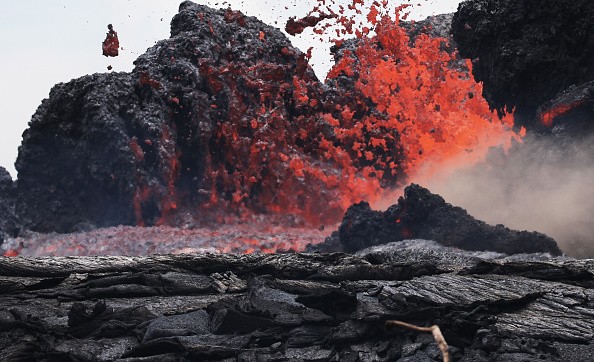The USGS and its Alaska Volcano Observatory (AVO) have raised the alert level and color code to the YELLOW / ADVISORY at Alaska's Davidof Volcano due to the odds of volcanic unrest.

Swarm of Earthquakes Hit Around the Davidof Volcano
Davidof Island, a haven for tufted and horned puffins, is thought to be part of a ring of islands left behind from an old twin-coned volcano that erupted catastrophically in the late Tertiary era and was completely devastated, according to Weather Boy.
This period, known as the Tertiary Period, lasted for about 65 million years and ended with the beginning of the ice ages of the Quaternary Period, which began around 2.6 million years ago. The volcano on Davidof Island, in the western central Aleutians, is known as the "Aleutian Krakatoa."
A swarm of earthquakes hit around the Davidof volcano over the previous three days, according to AVO. As of the morning of Dec. 10 at 10:45 a.m. local time, the greatest earthquake in recorded history had a 4.2 magnitude.
Volcanic disturbance or regional tectonic activity might be to blame for this swarm, AVO revealed in a statement.
Hotspot For Volcanic Eruptions and Earthquakes
The "Ring of Fire," an area surrounding the Pacific Ocean where numerous volcanic eruptions and earthquakes occur. The Davidof Volcano is situated here.
Plate tectonics is responsible for the Ring of Fire's seismic activity, which is caused by the movement, collision, and destruction of plates under and surrounding the Pacific Ocean.
The Alaska Volcano Observatory (AVO), the University of Alaska Fairbanks (UAFGI), the State of Alaska Division of Geological and Geophysical Surveys (ADGGS), the United States Geological Survey (USGS), and the Division of Geological and Geophysical Surveys (DGGS) collaborate to monitor the activity of volcanoes in this region of the Ring of Fire.
Hawaii Volcano Observatory (HVO), which monitors Hawaii's Kilauea, Mauna Loa and Hualalai volcanoes, is identical to the AVO. As for AVO, they keep an eye on Cleveland, Semisopochnoi, and Veniaminof as well as the rest of its cities.
In the past 2 million years alone, more than 130 volcanoes and volcanic fields have been active in Alaska. As of the mid-1700s, 50 of these organizations have been in existence and AVO investigates them.
Volcano Alert Levels and Aviation Codes
An organization called AVO issues the Aviation Codes and Volcano Alerts Levels. Each color has a distinct aviation code associated with it. A volcano is simply labeled "unassigned" if equipment on the ground cannot prove that it is operating at a normal background level of activity. Yellow indicates that a volcano is showing symptoms of increased unrest over the normal level of activity associated with a resting condition.
To indicate greater eruption risk, the color of the volcano's alert level changes from yellow to orange. At this point, the code becomes red, indicating that an eruption is either about to occur or is already taking place with considerable emissions of volcanic ash into the sky.
It is not unusual for the Volcanic Activity Alert levels to range from normal to advisory to alert. If there isn't enough information, it's simply marked as "unassigned," much as with aviation codes.
When the volcano isn't erupting, it's deemed normal when activity is at a regular background level. An alert is issued if the volcano shows evidence of increased unreat above the background level. Whenever a volcano shows signs of increased unrest or imminent, a watch or warning is issued, respectively.
For more news, updates about volcanoes and similar topics don't forget to follow Nature World News!
© 2026 NatureWorldNews.com All rights reserved. Do not reproduce without permission.





